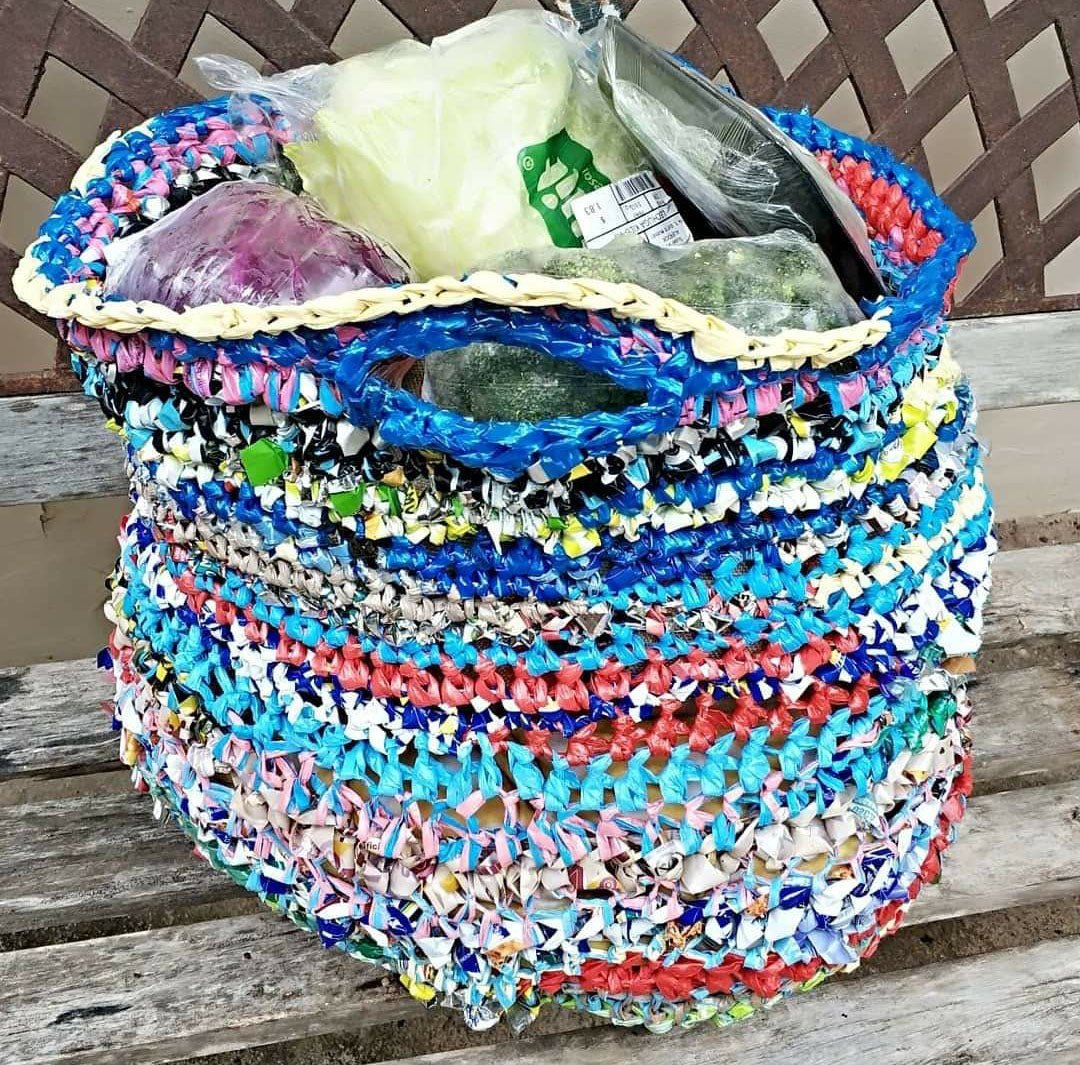Kitty Quitmeyer, one of our DGY Pride Scholarship Winners, is an environmentally-minded fiber artist who uses discarded plastic to crochet to create useful and thought-provoking items. Here, she shares with us some of her tips for working with plastic yarn, or plarn.
When Kitty Quitmeyer moved from Singapore to Panama, her yarn took a while to arrive at her new home. But, no worries—Kitty used plarn instead.

Kitty first learned of plarn, or plastic yarn, when she noticed her guitar teacher had a bag crocheted with plastic. She later saw an installation in Singapore with big plastic-crocheted bean bag chairs. “That kind of blew my mind,” she said.
A long time crafter herself, Kitty traded plarn-making techniques with other artists. Today, Kitty and her partner live in Panama and own an art science lab, Digital Naturalism Laboratories, meant to support the Smithsonian Tropical Research Institute. She uses a laser cutter to create very thin plarn, but if you don’t have access to such high-tech equipment, there is a low-tech method too.

Plarn can be made simply with scissors, though Kitty finds this may cause repetitive stress injuries. Kitty suggests cutting off the handles and bottoms of a plastic bag, slicing it to lay flat on a cutting mat, and using a rotary cutter in zig zags to make a long strand of plarn. Kitty likes the “slit skirt” method found in this article.

Ice bags are the gold standard—they have the most stretch—but different types of plastic will yield different textures. Kitty’s used tortilla bags, bread bags, and has often asked neighbors for their plastic trash.
“Even if you don’t shop with plastic bags, which I try not to, there’s still just plastic everywhere in our lives,” she said.

Plarn can be used on its own, or combined with traditional yarn. While it is a great insulator, it does not breathe and can be crunchy, so think household items, like bowls, meditation cushions, or reusable grocery bags, rather than wearable pieces. Many plarn crafters have also made sleeping mats for unhoused people.
Kitty has made water bottle holders with a sleeve entirely made of plarn and a strap weaved with yarn and plarn. Not only do items like these keep plastic out of the landfill for a while, but they can make artists—and anyone who sees these objects—think a little differently about their consumption habits.

“I know that we only have a small part that we can each play in environmentalism, but it doesn’t hurt and I think it inspires other people,” said Kitty. “I think it just helps you notice your own consumption patterns. It’s kind of shocking to see how much plastic I can collect.”
Kitty has also been inspired by @rubbishbaskets on Instagram, which uses thicker pieces of discarded plastic, wrapping yarn scraps around them, to create soft but structured coil baskets.
Kitty’s fiber work can be found on her website wellreadpanda.com and you can read more about her laboratory at dinalab.net.
 Rewards
Rewards









